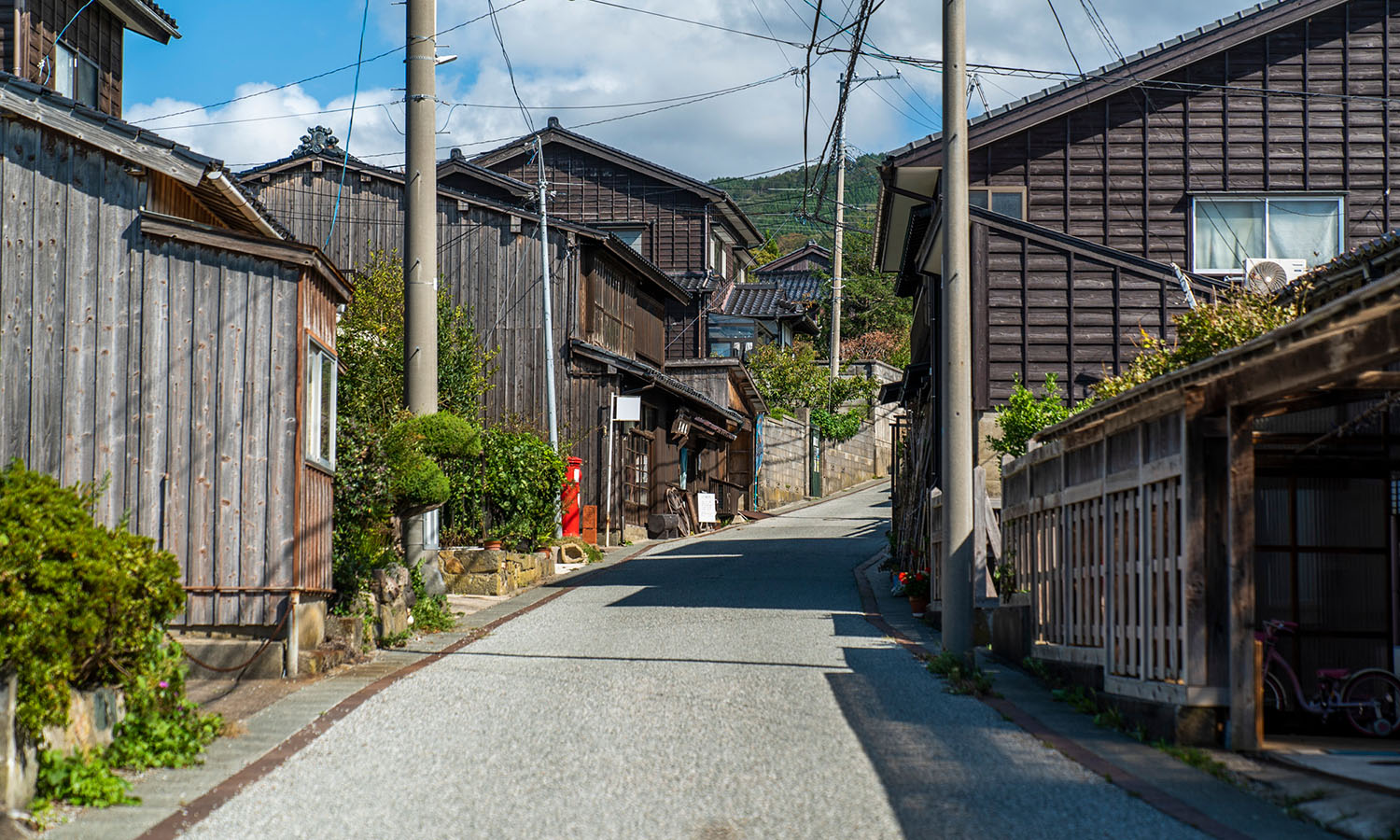 Do
Do
It’s known as Japan’s island of gold, not only because it was the country’s main source of the precious metal but also because it is a microcosm of the past. The culture on Sado was formed in three waves: the first – the aristocratic culture – was due to forced exiles; the second – samurai culture – was a response to the goldmine; and the third – merchant culture – was thanks to Sado’s location in the physical centre of the Japanese archipelago.
The old town of Shukunegi was the base for merchant culture in Sado. As the gold mine was flourishing, this village thrived as a port of call for ships travelling from Osaka to Hokkaido. Those living there made out very handsomely, at one stage taking in a third of all money made in Sado. Once the port was moved from Shukunegi to Ogi, five kilometers away, those who built the ships started living here and the area has been preserved in that form to this day.

The village is very dense with more than a hundred houses packed together, and as soon as you enter you can really get a sense of what it must have been like to live here in times gone by. The vast majority of buildings, however, are still lived in, with a few even open to the public. Inside they are exquisite with no expense spared. You can see how they were expanded from one to two floors, with lacquer walls and large hand-painted fusuma sliding doors. The ship carpenters’ skills did not go to waste.
If you want more ideas about what to do in the Sado Islands, check out the features on its traditions and culture and Japan’s island of gold.
From Tokyo, catch the JR Joetsu Shinkansen to Niigata Station, two hours away. At nearby Niigata Port, there are car ferry and high-speed jetfoil services to Ryotsu on Sado Island.
jreast.co.jp
sadokinsen.co.jp
JNTO (Japan National Tourism Organization)
jnto.org.au
True Sado
visitsado.com
History never repeats, so see some of Japan’s best on Sado Island. This highlight was sponsored by JNTO, but we liked it so decided to share it with you.
